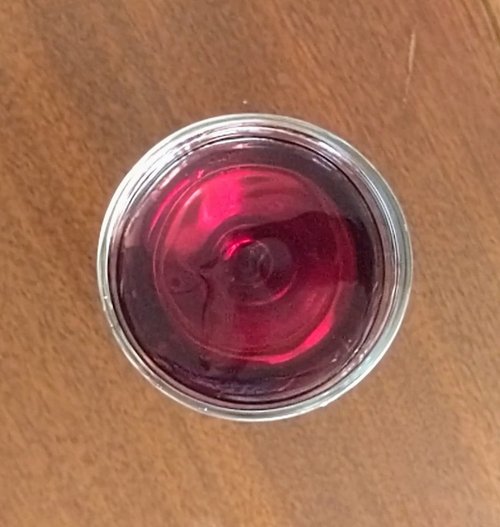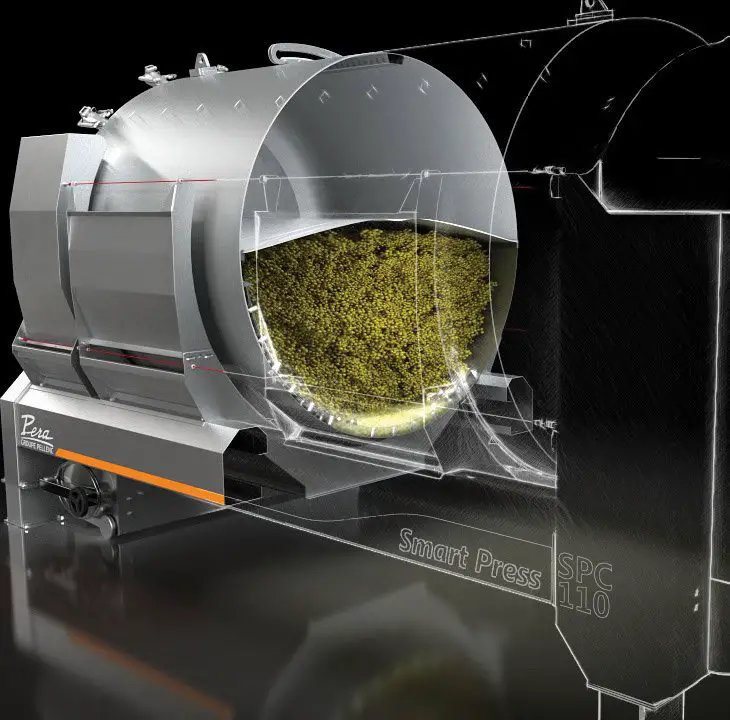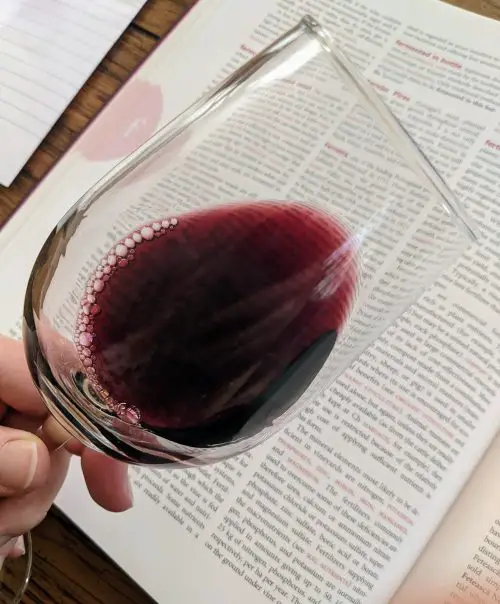
Every harvest I have to make decisions about what style of wine I want to make. Do I want a rosé, an easy-drinking fruity red, or a bold, tannic blockbuster? This is where knowing the difference between free run and press wine comes in handy.
Free run juice drains off of the grapes freely, without any pressure, and has the highest concentration of acid, sugar, and flavor – yummy goodness! Press juice comes from applying pressure to the grapes and extracts more bitter compounds from the skins, seeds, and stems. Press juice adds structure and body to wine. Winemakers use both to make balanced wines.
What Does Free Run Mean in Wine?

Check out this fun picture of a lineup of different wine styles using the same Cabernet Sauvignon grapes from the same harvest.
In winemaking, free run means the liquid that drains freely from the berries. The berries go through a crusher and then get transferred to a fermentation vessel or wine press.
Any juice that runs freely after the berries get crushed is ‘free run’.
Imagine biting into a juicy peach and the juice drips everywhere, this is free run juice and the same thing happens with wine grapes.
What Does Press Wine Mean in Winemaking?
After the berries are crushed and the free run juice drains off, there’s still liquid in the grapes.
Think of the difference between hand-squeezing an orange and using a juicer. Using the juicer will extract every last drop of liquid from your orange.
Winemakers use a wine press to extract additional juice or wine trapped in the grapes. When the winemakers press the grapes, they’re collecting the ‘press wine’.

Winemakers can apply a gentle pressing, which will release a little more juice from the berries, or they can use a heavy pressing, which will extract more juice, but also crush and release bitter compounds from the skins, seeds, and stems.
The amount of pressure used to press the grapes is called a press fraction.
Press juice comes from squishing the berries in a wine press and extracts more solids from the skins and seeds. The more pressure, the more solids.
This press juice has less acid and sugar and more tannin and bitter elements from the seeds and stems.
Huge commercial producers will extract as much juice from the berries as possible, not wanting to waste anything.
Small, boutique producers may only go through a few press fractions because they capture the highest quality juice early on and this is all they need or want for their wine production.
Winemakers can use press juice for blending.
Juice from a fraction pressing can add structure and better mouthfeel to a red wine.
What’s Hard Pressed Wine?
If you ever run into the term hard pressed wine, then it’s talking about that last pressing of the grapes.
This bitter, tannic wine includes compounds from the skins, seeds, and stems because the pressing extracts every last drop of liquid from the grapes.
In huge commercial wineries, hard pressed wine may be folded into their wine tanks – think millions of gallons of wine – where wine’s flavor profile will have less of a stylistic impact due to the massive production volume.
Smaller producers may use hard pressed wine to top up their entry-level, less expensive wines during maturation.
Wine producers focused on top-tier bottles will probably just throw out their hard pressed wine.
Are Free Run Juice and Free Run Wine the Same Thing?
Free run juice and free run wine are similar in process, but different in material.
- Free run juice refers to wine grapes that haven’t gone through fermentation yet. The liquid is juice. This is the process used for white wines, where the berries are crushed and pressed before fermentation starts. Grape skins have bitter tannins in them and winemakers don’t want that to transfer to your delicate white wines.
- Free run wine refers to wine grapes that have already gone through fermentation and the liquid is technically wine. Red wines go through crushing and fermentation before draining off and pressing. This extracts color and tannin.
What’s the Difference Between Rosé and Red Wine?
If you look at the picture again, you’ll see that the rosé wine is translucent and the brightest in color.

This rosé is made from the saignée (“sohn-yay”) method, or the bleeding off method. In this method, the winemaker has a large vat of red grapes that were recently crushed – meaning that the berries have released their juice, but the wine hasn’t started fermenting just yet.
The winemaker sticks a hose in this vat and siphons off some of the juice.
The juice is pink, not dark ruby, because it’s only been in contact with the skins for a short period of time (maybe a few hours to a day or two), and all of a red wine’s color comes from the grape skins.
So rose wines have very little sediment because they come straight from the juice.
Rose wines are also lighter in body and higher in acid than a typical red wine.
Rose wine is a perfect example of how a wine’s flavor profile changes based on pressing (or, in this case, choosing not to press).
You can physically see the distinction!
Helpful Tip: Here’s everything you need to know about how winemakers make different styles of rose wine.
Is Free Run Better than Press Wine?

Instead of asking if free run is better than press wine or press juice, think of each component as a separate ingredient that the winemaker can use.
Remember, the winemaker’s goal is to bring you a balanced wine that you’ll enjoy.
Wines need acid, fruit concentration, and structure to dance across your palate.
Having each available allows the winemaker to pick and choose when creating that final blend.
Each subsequent pressing extracts different compounds. These different pressings affect the sensory qualities of the wine – the mouthfeel and flavors all change.
Winemakers: Playing with their grapes to bring you bottled happiness.
Thirsty for More?
Check out this post on how winegrowers decide what grapes get planted where – also a little nerdy.
And here’s a post on the economics and decisions that go into using oak barrels.



